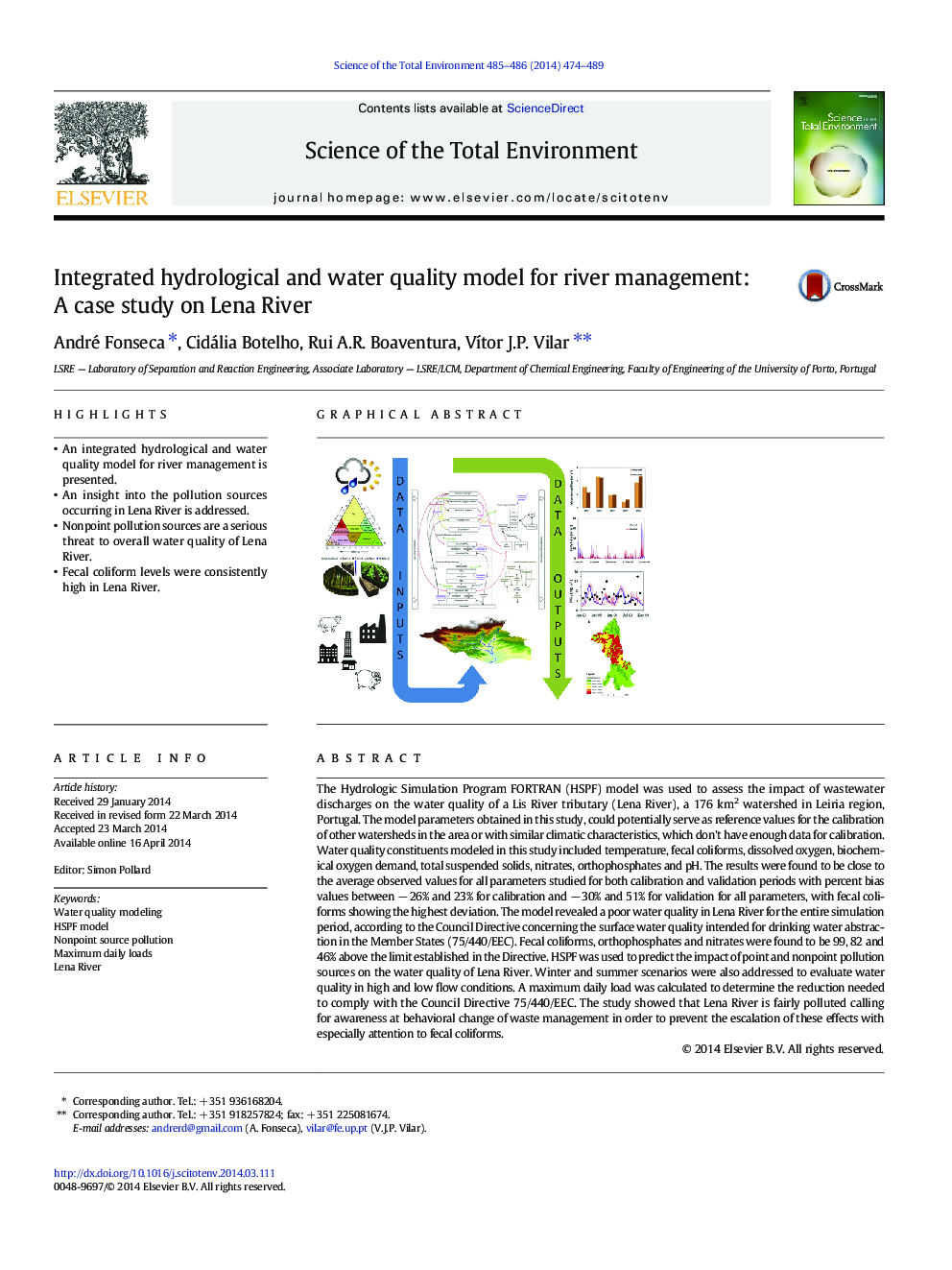| کد مقاله | کد نشریه | سال انتشار | مقاله انگلیسی | نسخه تمام متن |
|---|---|---|---|---|
| 6330456 | 1619783 | 2014 | 16 صفحه PDF | دانلود رایگان |
- An integrated hydrological and water quality model for river management is presented.
- An insight into the pollution sources occurring in Lena River is addressed.
- Nonpoint pollution sources are a serious threat to overall water quality of Lena River.
- Fecal coliform levels were consistently high in Lena River.
The Hydrologic Simulation Program FORTRAN (HSPF) model was used to assess the impact of wastewater discharges on the water quality of a Lis River tributary (Lena River), a 176 km2 watershed in Leiria region, Portugal. The model parameters obtained in this study, could potentially serve as reference values for the calibration of other watersheds in the area or with similar climatic characteristics, which don't have enough data for calibration. Water quality constituents modeled in this study included temperature, fecal coliforms, dissolved oxygen, biochemical oxygen demand, total suspended solids, nitrates, orthophosphates and pH. The results were found to be close to the average observed values for all parameters studied for both calibration and validation periods with percent bias values between â 26% and 23% for calibration and â 30% and 51% for validation for all parameters, with fecal coliforms showing the highest deviation. The model revealed a poor water quality in Lena River for the entire simulation period, according to the Council Directive concerning the surface water quality intended for drinking water abstraction in the Member States (75/440/EEC). Fecal coliforms, orthophosphates and nitrates were found to be 99, 82 and 46% above the limit established in the Directive. HSPF was used to predict the impact of point and nonpoint pollution sources on the water quality of Lena River. Winter and summer scenarios were also addressed to evaluate water quality in high and low flow conditions. A maximum daily load was calculated to determine the reduction needed to comply with the Council Directive 75/440/EEC. The study showed that Lena River is fairly polluted calling for awareness at behavioral change of waste management in order to prevent the escalation of these effects with especially attention to fecal coliforms.
327
Journal: Science of The Total Environment - Volumes 485â486, 1 July 2014, Pages 474-489
